#Music Influencer in India
Explore tagged Tumblr posts
Text
Music, the universal language of emotions, holds the power to heal and inspire. In today’s digital age, music influencers are at the forefront, showcasing their unique styles and connecting with audiences worldwide. From singers to composers, these influencers navigate diverse genres, captivating listeners and setting trends in the ever-evolving music scene. Here’s a handpicked selection of the top 4 music influencers who are making waves and setting the stage for 2024. Sumonto Mukherjee
Starting his musical training in Hindustani Classical music during his early childhood, Sumonto has crafted his musical journey from being selected for Saregamapa Lil Champs to becoming a music influencer with his viral music covers. He has become a household name in the music industry, boasting more than 450k followers on Instagram and over 270k views on ‘Khair Mangda’, showcasing his ability to captivate audiences and make them groove to his beat. Gravero
Sourav Ray is popularly known for creating mashups, and one of his recent trending mashups is ‘Husn X Let her go’ with millions of views. He is known for producing Lofi mashups to originals. His deep understanding of music and passion to create it in such a way that it touches every soul and resonates with every listener. His talent, hard work, and dedication have paved the way for him to achieve his dreams and goals in life. Mihika Sansare
Mihika Sansare is popularly known for creating music covers in her unique style and posting them across social media platforms to entertain and engage with her audience. She is a guitarist and a singer with 250k+ followers on Instagram and 600k+ subscribers on YouTube. One of her covers – ‘Tumhe jo maine dekha’ has garnered more than one million views. Vasu Kainth
Vasu Kainth is a singer, composer, and a songwriter. He has a huge fanbase with 90k+ followers on Instagram and 200k+ subscribers on YouTube. From original songs to mashup videos, he is creating music in a unique way to connect with his audience. He even got the opportunity to collaborate with other renowned musicians from the industry, that feels like a dream come true. From classical roots to innovative mashups and soulful covers, every artist has carved their unique style, resonating with audiences globally. Music influencers have turned social media platforms into their new stage, where they can entertain and connect with their audience.
#Infliencer Marketing Agency#Influencer Marketing Agency in India#Content Creator#Music Influencer#Music Influencer in india
0 notes
Text
Fast Life Mood board Chapters 1. 2.
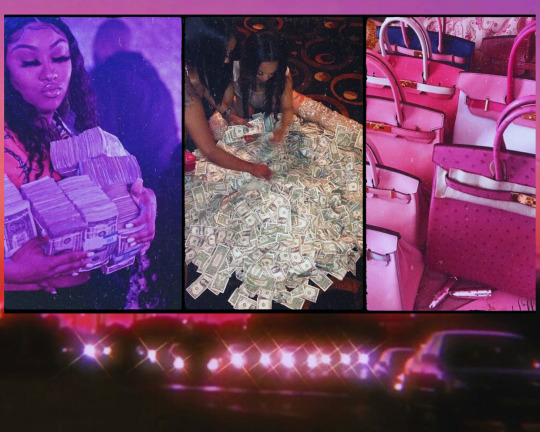

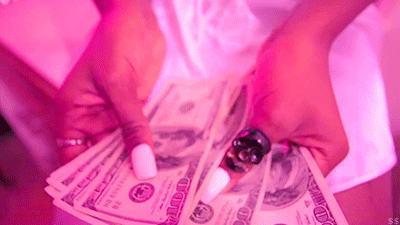

Money, Clothes, Cars, & Diamonds That fast life catches up to you…
#aesthetic#black girl fashion#beauty#fashion#ari fletcher#dreamdoll#india love#clermont twins#instagram#moodboard#Instagram models#influencer#money#atlanta#pretty girls like trap music#hustler#trap#fanfiction#smut#Spotify
13 notes
·
View notes
Text
Escaped Prisoner Prank
4K
youtube
#trending viral instagram love explorepage explore instagood fashion follow tiktok like likeforlikes followforfollowback#photography india trend instadaily memes music style trendingnow reels foryou likes photooftheday model#beautiful bollywood bhfyp instaviralvideos fyp viralpost beauty kerala picoftheday dance art cute#mumbai funny onlineshopping foryoupage comment fashionblogger youtube meme trendy nature followme lifestyle tamil#life photoshoot reelsinstagram new motivation funnymemes instafashion sharefyp foryou viral explorepage#prank pranks funny memes viral comedy tiktok funnyvideos prankvideo prankindonesia meme prankster lol#funnymemes love funnypranks dagelan prankwars videolucu fun video pranksgonewrong ngakakkocak instagram#trending like ngakak follow youtube pranksterslucu prankvideos humor instagood prankinvasion prankkissing#youtuber youtube youtubechannel youtubers instagram subscribe love follow like gamer music vlogger tiktok gaming instagood#explorepage trending sub youtubevideos viral influencer explore video blogger vlog photography twitch memes youtubevideo k#contentcreator ps likeforlikes fashion streamer followforfollowback musician dance art myself funny model bhfyp bass dj like#likes makeup musicproducer musically twitchstreamer songs instadaily smallyoutuber fortnite bassboosted bgm beauty trap party#Youtube
3 notes
·
View notes
Text
#music pr#ai with pr#ai#artist#media outreach#audience#influencer#data#campaign#reputation management#social media#pr agency in noida#best pr agency in india#pr agency#best pr agencies in india#public relations#pr agencies in noida#pr agency for startups in india#best pr agencies in noida#pr
1 note
·
View note
Text




Buy Boat Wired Earphones Online at Best Prices In India
Buy Boat Wired Earphones at India's Best Online Shopping Store. Check Price in India and Shop Online. Free Shipping Cash on Delivery Best Offers
#boathead#music#boatheadphones#boat#plugintonirvana#headphones#boatnirvana#boatheads#whatsyournirvana#iamaboathead#boatlifestyle#sports#fitlife#lifestyleblogger#influencer#wirelessheadphones#fashionblogger#india#playwithboat#sportsgirl#gametime#fitnessblogger#wirelessbluetoothheadsets#boatrockerz#onlineshopping#shopping
1 note
·
View note
Text
South Asian and Hindu Influences in ATLA (Part 2)
disclaimer: i was raised culturally and religiously hindu, and though i've tried to do my research for this post and pair it with my own cultural knowledge, i'm not an expert on hinduism by any means. should i mess up, please let me know.
please also be aware that many of the concepts discussed in this post overlap heavily with religions such as buddhism and jainism, which might have different interpretations and representations. as i'm not from those religions or cultures, i don't want to speak on them, but if anyone with that knowledge wishes to add on, please feel free.
Part 1
In the previous post, I discussed some of the things ATLA got right in its depictions of desi and hindu cultures. unfortunately, they also got plenty of things wrong - often in ways that leaned towards racist caricatures - so let's break them down, starting with...
Guru Pathik
both the word "guru" and name "pathik" come from sanskrit. pathik means "traveler" or "he who knows the way" while guru is a term for a guide or mentor, similar to a teacher.
gurus were responsible for the very first education systems in ancient india, setting up institutions called gurukuls. students, referred to as disciples, would often spend years living with and learning from their gurus in these gurukuls, studying vedic and buddhist texts, philosophy, music and even martial arts.
however, their learning was not limited merely to academic study, as gurus were also responsible for guiding the spiritual evolution of their disciples. it was common for disciples to meditate, practice yoga, fast for days or weeks, and complete mundane household chores every day in order to instill them with self-discipline and help them achieve enlightenment and spiritual awareness. the relationship between a guru and his disciple was considered a sacred, holy bond, far exceeding that of a mere teacher and student.
aang's training with guru pathik mirrors some of these elements. similar to real gurus, pathik takes on the role of aang's spiritual mentor. he guides aang in unblocking his chakras and mastering the avatar state through meditation, fasting, and self-reflection - all of which are practices that would have likely been encouraged in disciples by their gurus.
pathik's design also takes inspiration from sadhus, holy men who renounced their worldly ties to follow a path of spiritual discipline. the guru's simple, nondescript clothing and hair are reflective of the ascetic lifestyle sadhus are expected to lead, giving up material belongings and desires in order to achieve spiritual enlightenment and, ultimately, liberation from the reincarnation cycle.
unfortunately, this is where the respectful references end because everything else about guru pathik was insensitive at best and stereotypical at worst.
it is extremely distasteful that the guru speaks with an overexaggerated indian accent, even though the iranian-indian actor who plays him has a naturally british accent. why not just hire an actual indian voice actor if the intention was to make pathik sound authentic? besides, i doubt authenticity was the sole intention, given that the purposeful distortion of indian accents was a common racist trope played for comedy in early 2000s children's media (see: phineas and ferb, diary of a wimpy kid, jessie... the list goes on).
furthermore, while pathik is presented a wise and respected figure within this episode, his next (and last) appearance in the show is entirely the opposite.
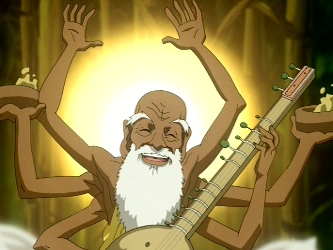
in the episode nightmares and daydreams, pathik appears in aang's nightmare with six hands, holding what appears to be a veena (a classical indian music instrument). this references the iconography of the hindu deity Saraswati, the goddess of wisdom and knowledge. the embodiment of divine enlightenment, learning, insight and truth, Saraswati is a member of the Tridevi (the female version of the Trimurti), one of the most respected and revered goddesses in the Hindu pantheon... and her likeness is used for a cheap laugh on a character who's already treated as a caricature.
that's bad enough on its own, but when you consider that guru pathik is the only explicitly south asian coded character in the entire show, it's downright insulting. for a show that took so many of its foundational concepts from south asia and hinduism and yet provided almost no desi representation in return, this is just rubbing salt in the wound.
Chakras
"chakra", meaning "circle" or "wheel of life" in sanskrit, refers to sources of energy found in the human body. chakra points are aligned along the spine, with energy flowing from the lowest to the highest point. the energy pooled at the lowest chakra is called kundalini, and the aim is to release this energy to the highest chakra in order to achieve spiritual enlightenment and consciousness.
the number of chakras varies in different religions, with buddhism referencing five chakras while hinduism has seven. atla draws from the latter influence, so let's take a look at the seven chakras:
Muladhara (the Root Chakra). located at the base of the spine, this chakra deals with our basest instincts and is linked to the element of earth.
Swadhisthana (the Sacral Chakra). located just below the navel, this chakra deals with emotional intensity and pleasure and is linked to the element of water.
Manipura (the Solar Plexus Chakra). located in the stomach, this chakra deals with willpower and self-acceptance and is linked to the element of fire.
Anahata (the Heart Chakra). located in the heart, this chakra deals with love, compassion and forgiveness and is linked to the element of air. in the show, this chakra is blocked by aang's grief over the loss of the air nomads, which is a nice elemental allusion.
Vishudda (the Throat Chakra). located at the base of the throat, this chakra deals with communication and honesty and is linked to the fifth classical element of space. the show calls this the Sound Chakra, though i'm unsure where they got that from.
Ajna (the Third Eye Chakra). located in the centre of the forehead, this chakra deals with spirituality and insight and is also linked to the element of space. the show calls it the Light Chakra, which is fairly close.
Sahasrara (the Crown Chakra). located at the very top of the head, this chakra deals with pure cosmic consciousness and is also linked to the element of space. it makes perfect sense that this would be the final chakra aang has to unblock in order to connect with the avatar spirit, since the crown chakra is meant to be the point of communion with one's deepest, truest self.
the show follows these associations and descriptions almost verbatim, and does a good job linking the individual chakras to their associated struggles in aang's arc.
Cosmic Energy
the idea of chakras is associated with the concept of shakti, which refers to the life-giving energy that flows throughout the universe and within every individual.
the idea of shakti is a fundamentally unifying one, stating that all living beings are connected to one another and the universe through the cosmic energy that flows through us all. this philosophy is referenced both in the swamp episode and in guru pathik telling aang that the greatest illusion in the world is that of separation - after all, how can there be any real separation when every life is sustained by the same force?
this is also why aang needing to let go of katara did not, as he mistakenly assumed, mean he had to stop loving her. rather, the point of shedding earthly attachment is to allow one to become more attuned to shakti, both within oneself and others. ironically, in letting go of katara and allowing himself to commune with the divine energy of the universe instead, aang would have been more connected to her - not less.
The Avatar State
according to hinduism, there are five classical elements known as pancha bhuta that form the foundations of all creation: air, water, earth, fire, and space/atmosphere.
obviously, atla borrows this concept in making a world entirely based on the four classical elements. but looking at how the avatar spirit is portrayed as a giant version of aang suspended in mid-air, far above the earth, it's possible that this could reference the fifth liminal element of space as well.
admittedly this might be a bit of a reach, but personally i find it a neat piece of worldbuilding that could further explain the power of the avatar. compared to anyone else who might be able to master only one element, mastering all five means having control of every building block of the world. this would allow the avatar to be far more attuned to the spiritual energy within the universe - and themselves - as a result, setting in motion the endless cycle of death and rebirth that would connect their soul even across lifetimes.
#atla#atla cultural influences#hinduism in atla#welp i thought this would be the last part but i ended up having more to talk about than i thought#so i'll save the book 3 inspirations for the next post#including my absolute favourite combustion man#and by favourite i mean kill it with fire why did you ever think this was okay to do writers
505 notes
·
View notes
Text
EXTERNAL INFLUENCES IN DUNGEON MESHI: INDIAN PHILOSOPHY
(SPOILERS FOR DUNGEON MESHI BELOW)
We know that Ryoko Kui spent considerable time at the beginning of working on Dungeon Meshi doing research and planning the series. Kui constantly references real world culture, history and mythology, but she also occasionally references real-world philosophy.
The story of Dungeon Meshi is full of philosophical questions about the joy and privilege of being alive, the inevitability of death and loss, the importance of taking care of yourself and your loved ones, and the purpose and true nature of desire. Kui explores these issues through the plot, the characters, and even the fundamental building blocks that make up her fictional fantasy world. Though it’s impossible to say without Kui making a statement on the issue, I believe Dungeon Meshi reflects many elements of ancient Indian philosophy and religion.
It’s possible that Kui just finds these ideas interesting to write about, but doesn’t have any personal affiliation with either religion, however I would not be at all surprised if I learned that Kui is a Buddhist, or has personal experience with Buddhism, since it’s one of the major religions in Japan.
I could write many essays trying to explain these extremely complex concepts, and I know that my understanding of them is imperfect, but I’ll do my best to explain them in as simple a way as possible to illustrate how these ideas may have influenced Kui’s work.
HINDUISM
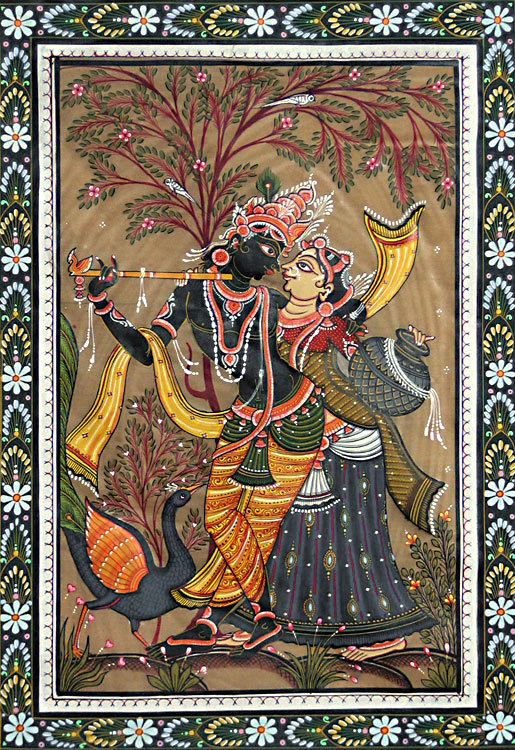
Hinduism is the third-largest religion in the world and originates in India. The term Hinduism is a huge umbrella that encompasses many diverse systems of thought, but they have some shared theological elements, and share many ancient texts and myths.
According to Classical Hindu belief, there are four core goals in human life, and they are the pursuit of dharma, artha, kama, and moksha.
Dharma is the natural order of the universe, and also one’s obligation to carry out their part in it. It is the pursuit and execution of one’s inherent nature and true calling, playing one’s role in the cosmic order.
Artha is the resources needed for an individual’s material well-being. A central premise of Hindu philosophy is that every person should live a joyous, pleasurable and fulfilling life, where every person's needs are acknowledged and fulfilled. A person's needs can only be fulfilled when sufficient means are available.
Kama is sensory, emotional, and aesthetic pleasure. Often misinterpreted to only mean “sexual desire”, kama is any kind of enjoyment derived from one or more of the five senses, including things like having sex, eating, listening to music, or admiring a painting. The pursuit of kama is considered an essential part of healthy human life, as long as it is in balance with the pursuit of the three other goals.
Moksha is peace, release, nirvana, and ultimate enlightenment. Moksha is freedom from ignorance through self-knowledge and true understanding of the universe, and the end of the inevitable suffering caused by the struggle of being alive. When one has reached true enlightenment, has nothing more to learn or understand about the universe, and has let go of all earthly desires, they have attained moksha, and they will not be reborn again. In Hinduism’s ancient texts, moksha is seen as achievable through the same techniques used to practice dharma, for example self-reflection and self-control. Moksha is sometimes described as self-discipline that is so perfect that it becomes unconscious behavior.
The core conflict of Hinduism is the eternal struggle between the material and immaterial world. It is often said that all of the material world is “an illusion,” and what this means is that all good and bad things will inevitably end, because the material world is finite. On the one hand, this is sad, because everything good in life will one day cease to exist, but on the other hand, this is reassuring, because all of the bad things will eventually end as well, and if one can accept this, they will be at peace.
The central debate of Hinduism is, which is more important: Satisfying your needs as a living thing, having a good life as a productive member of society, serving yourself, your family, and the world by participating in it the way nature intended? Or is it rejecting desire and attachment, discovering the true nature of existence, realizing the impermanence of material things, and that one can only escape the suffering that comes from the struggle of life by accepting that death and loss are inevitable?
There is no set answer to this question, and most believers of Hinduism tend to strike a balance between the two extremes simply because that’s what happens when a person leads a normal, average life, however there are also those who believe that pursuing extremes will lead to ultimate enlightenment and final release as well.
BUDDHISM
Buddhism is an Indian religion and philosophical tradition that originated in the 5th century BCE, based on teachings attributed to religious teacher the Buddha. It is the world's fourth-largest religion and though it began in India, it has spread throughout all of Asia and has played a major role in Asian culture and spirituality, eventually spreading to the West beginning in the 20th century.
Buddhism is partially derived from the same worldview and philosophical belief system as Hinduism, and the main difference is that the Buddha taught that there is a “middle way” that all people should strive to attain, and that the excesses of asceticism (total self-denial) or hedonism (total self-indulgence) practiced by some Hindus could not lead a person to moksha/enlightenment/release from suffering.
Buddhism teaches that the primary source of suffering in life is caused by misperception or ignorance of two truths; nothing is permanent, and there is no individual self.
Buddhists believe that dukkha (suffering) is an innate characteristic of life, and it is manifested in trying to “have” or “keep” things, due to fear of loss and suffering. Dukkha is caused by desire. Dukkha can be ended by ceasing to feel desire through achieving enlightenment and understanding that everything is a temporary illusion.
There are many, many other differences between Hinduism and Buddhism, but these elements are the ones that I think are most relevant to Kui’s work.
Extreme hedonism involves seeking sensual pleasure without any limits. This could just be indulging in what people would consider “normal” pleasures, like food, sex, drugs and the arts, but it can also involve doing things which are considered socially repugnant, either literally or by taking part in symbolic rituals that represent these acts. Some examples are holding religious meetings in forbidden places, consuming forbidden substances (including human flesh), using human bones as tools, or engaging in sex with partners who are considered socially unacceptable (unclean, wrong gender, too young, too old, related to the practitioner). Again, these acts may be done literally or symbolically.
Extreme ascetic practices involve anything that torments the physical body, and some examples are meditation without breathing, the total suppression of bodily movement, refusing to lay down, tearing out the hair, going naked, wearing rough and painful clothing, laying on a mat of thorns, or starving oneself.
HOW THIS CONNECTS TO DUNGEON MESHI
Kui’s most emphasized message in Dungeon Meshi is that being alive is a fleeting, temporary experience that once lost, cannot truly be regained, and is therefore precious in its rarity. Kui also tells us that to be alive means to desire things, that one cannot exist without the other, that desire is essential for life. This reflects the four core goals of human life in Hinduism and Buddhism, but also could be a criticism of some aspects of these philosophies.
I think Kui’s story shows the logical functionality of the four core goals: only characters who properly take care of themselves, and who accept the risk of suffering are able to thrive and experience joy. I think Kui agrees with the Buddhist stance that neither extreme hedonism nor extreme self-denial can lead to enlightenment and ultimate bliss… But I also think that Kui may be saying that ultimate bliss is an illusion, and that the greatest bliss can only be found while a person is still alive, experiencing both loss and desire as a living being.

Kui tells us living things should strive to remain alive, no matter how difficult living may be sometimes, because taking part in life is inherently valuable. All joy and happiness comes from being alive and sharing that precious, limited life with the people around you, and knowing that happiness is finite and must be savored.
Dungeon Meshi tells us souls exist, but never tells us where they go or what happens after death. I think this is very intentional, because Kui doesn’t want readers to think that the characters can just give up and be happy in their next life, or in an afterlife.
There is resurrection in Dungeon Meshi, but thematically there are really no true “second chances.” Although in-universe society views revival as an unambiguous good and moral imperative, Kui repeatedly reminds us of its unnatural and dangerous nature. Although reviving Falin is a central goal of the story, it is only when Laios and Marcille are able to let go of her that the revival finally works… And after the manga’s ending, Kui tells us Falin leaves Laios and Marcille behind to travel the world alone, which essentially makes her dead to them anyway, since she is absent from their lives.
At the same time, Kui tells us that trying to prevent death, or avoid all suffering and loss is a foolish quest that will never end in happiness, because loss and suffering are inevitable and must someday be endured as part of the cycle of life. Happiness cannot exist without suffering, just like the joy of eating requires the existence of hunger, and even starvation.
Kui equates eating with desire itself, using it as a metaphor to describe anything a living creature might want, Kui also views the literal act of eating as the deepest, most fundamental desire of a living thing, the desire that all other desires are built on top of. If a living thing doesn’t eat, it will not have the energy necessary to engage with any other part of life. Toshiro, Mithrun, and Kabru are all examples of this in the story: They don’t take care of themselves and they actively avoid eating, and as a result they suffer from weakness, and struggle to realize their other desires.
Kui suggests that the key difference between being alive or dead is whether or not someone experiences desire. If you are alive, even if you feel empty and cannot identify your desires like Mithrun, you still have desires because you would be dead without them. The living body desires to breathe, to eat, to sleep, even if a person has become numb, or rejected those desires either to punish themselves, or out of a lack of self-love.
Sometimes, we have to do things which are painful and unpleasant, in order to enjoy the good things that make us happy. I believe Kui is telling us that giving up, falling into despair, and refusing to participate in life is not a viable solution either.
The demon only learns to experience desire by entering into and existing in the material, finite world. This experience intoxicates the demon, and it becomes addicted to feeling both the suffering of desire, and the satisfaction of having it fulfilled. This unnatural situation is what endangers the Dungeon Meshi world, and it’s only by purging the demon of this ability to desire that the world can be saved. The demon is like a corrupted Buddha that must give up its desires in order to return to the peaceful existence it had before it was corrupted.
The demon curses Laios to never achieve his greatest desires at the end of the manga, which manifests in several ways, such as losing his monstrous form, Falin choosing to leave after she’s revived, and being unable to get close to monsters because they are afraid of him. In some ways you could compare Laios to a Bodhisattva, a person who tries to aid others in finding nirvana/moksha, even if it prolongs their own suffering and prevents them from finding personal release. Laios gives the demon peace, but Laios himself will never be able to satisfy his desires, and must eventually come to accept his loss and move on with his life.
(This is an excerpt from Chapter 3 of my Real World Cultural and Linguistic influences in Dungeon Meshi essay.)
#dungeon meshi#delicious in dungeon#the winged lion#dungeon meshi spoilers#laios touden#mithrun of the house of kerensil#analysis#The Essay#After all the conversation about Mithrun I felt it was really important to drop this excerpt today
157 notes
·
View notes
Text
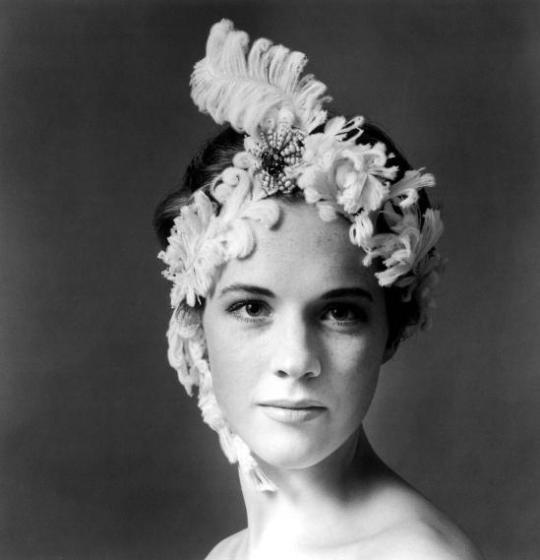
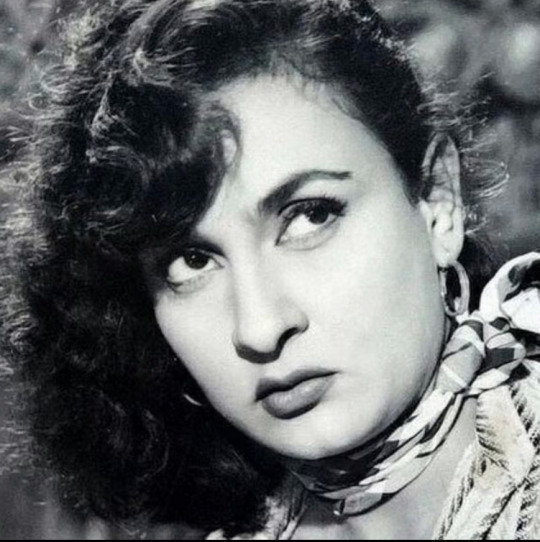
Propaganda
Julie Andrews (The Sound of Music, Mary Poppins)—Oh where to start .... I'm not sure I even know how. She's just perfection. And it's not fair I can't bring post 70s work into this, because she just gets better and better, and her drag performance in to die for. But in the era I CAN talk about, she shows she has THE RANGE. Beautiful, feisty, funny, holding her own against Christopher Plummer, Paul Newman, Rock Hudson. Oh she's luminous.
Nadira (Shree 420, Dil Apna Aur Preet Parai)— She had a blast playing the femme fatal in Indian films in the 50s. Also the costumes she wore in Shree 420 are absolutely iconic. It's important to mention that she was Jewish. She was born Farhad "Florence" Ezekiel in Baghdad to an Iraqi Jewish family. They moved to India sometime in the 1940s. The funny thing is that she originally wanted to convert to Catholicism and become a nun but joined the film industry instead as her family desperately needed money. Even though she was unfortunately typecast in femme fatale roles after playing the nightclub entertainer Maya in Shree 420, she always gave 110% to every role she was cast in. Apparently she acted in a German film as well? She was also one of the most highly paid actresses in the Indian film industry and was one of the few Indians to own a Rolls Royce.
This is round 3 of the tournament. All other polls in this bracket can be found here. Please reblog with further support of your beloved hot sexy vintage woman.
[additional propaganda submitted under the cut.]
Julie Andrews propaganda:

"She has such a simple but amazing beauty to her. Not to mention her amazing and melodic singing voice!"

"Roles like nannies and governesses can make us forget how attractive she was! A perfect combination of elegant and adorable, with the most incredible vocal range to boot!"
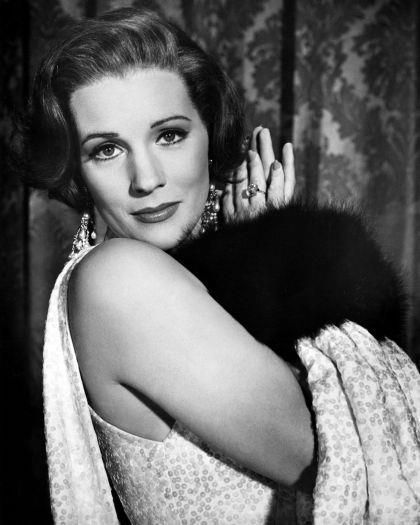
"Besides having one of the most amazing singing voices ever to grace the silver screen, Julie always had an understated beauty to her that wasn't always shown off on screen. But it's there nonetheless because her characters managed to pull some of the hottest men ever to grace the screen."

"The juxtaposition between carefree Maria and stern but fun Mary Poppins shows the power of the acting of this HOT VINTAGE MOVIE WOMAN"

"Charming, genteel, incredibly charismatic, beautiful, and has an angelic singing voice to boot. Her screen roles as Maria in The Sound of Music and Mary Poppins are absolutely iconic for a reason and she originated several well-known Broadway roles before those."
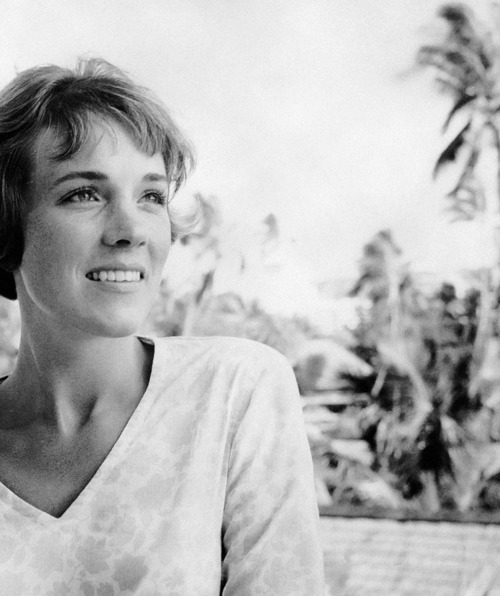
"the most beautiful woman 12 year old me had ever seen possibly"
"OMG OMG OMG she’s definitely been submitted before how could she NOT but!!!! I loveeee her so muchhhh rahhhh prebby!!!! cool!!!! mary poppins the beloved <33333 some people dislike it but I love jolly holiday so much because it IS a jolly holiday with Mary!!! no wonder that it’s Mary that we love!!!!!"
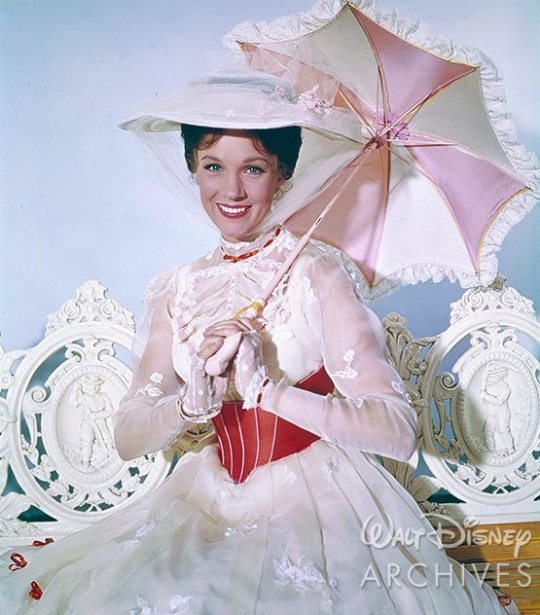
"I know many people who were taught in singing lessons "when in doubt, pronounce words how julie andrews would pronounce them." THATS CALLED INFLUENCE. THATS CALLED MOTHERING THOUSANDS."
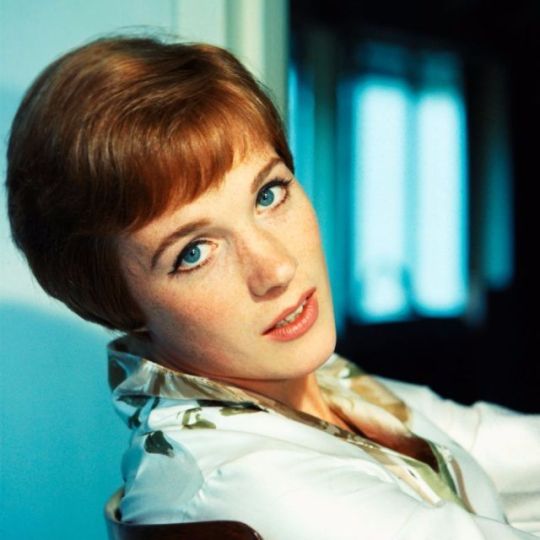
Nadira:
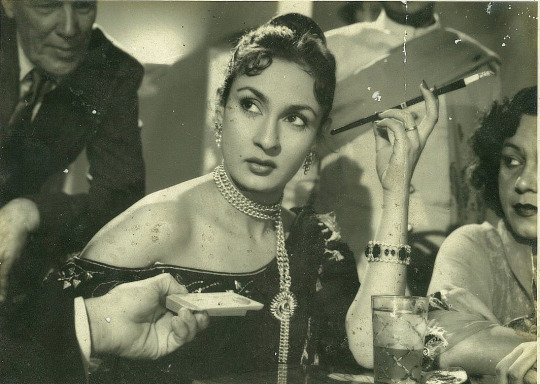
I just submitted a whole list of golden-era Bollywood stars without whom I thought this tournament could not conscionably be considered complete BUT Nadira has got my personal vote for Hottest of the lot. She played a bunch of delicious vamp roles in her youth before graduating to being a creepy spiderlady antagonist type in middle/older age. Rare is the still in which she looks like she's NOT about to gnaw your face off. Yow!
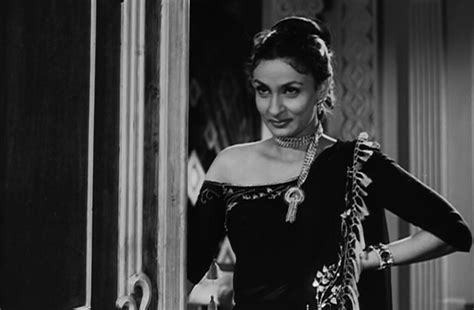
204 notes
·
View notes
Text
I stretch anywhere a total of 45 minutes to 2.5 hours throughout the day, averaging closer to 2 hours each day. I stretch while chopping for dinner. I stretch after meditation. I stretch before leaving the house and after coming back home from riding my bike. I stretch while folding clothes low to the ground. I stretch at night to good music. I didn’t start actively stretching this way until 3 years ago and if I knew in my 20s and 30s what I know now, I would have started then. Stretching is the most important part of my practice, right behind nature/warm sun. Stretching helps the body release old narratives and receive new more updated ones. We reprogram our minds when we bring more lubrication to our bodies through releasing or softening the contractions in our tissues, ligaments, and joints. Because the perceptions, beliefs, expectations, conditionings and programmings locked into our folds greatly influence the quality of our reality.
The female body is mainly absorptive and receptive—meaning it takes in, sucks in, and receives all manners of information physically, spiritually, and energetically from morning to night. The noisier our bodies are, generally the more contracted and tighter we tend to be, often living in unconscious fight or flight states in our we breathe or move, even though there is no threat in sight. But stretching often throughout the day helps to relax calm the body down from its unconscious holding patterns and release the shadowy accumulations we pick up by nature of being female and having a womb, even the accumulations from other timelines. If your womb has been removed, your body still receives energetically/spiritually. That’s because stretching is not just physical, it’s exceptional spiritual hygiene. Too many accumulations makes our bodies dense and loud. The aim is the soften and quiet down the noise living inside. When your body becomes less noisy, you may notice that you give better eye contact and have more of a relaxed presence in the world. If you are genetically very flexible, you have to discover other ways shadows show up in your body and life.
Most people live disconnected from what is living in their bodies and offshoot the consequences of their lives onto someone or something else. You must know that no one is coming to save you and consciously use your mind, breath, and body to deliberately create from in your current reality. Even 5-10 minutes of stretching morning and night to chanting tones, harp sounds, or affirmation music makes a vast difference overtime. —India Ame‘ye
270 notes
·
View notes
Text
I’ve been stricken with numerous personal life circumstances that have made it difficult to produce solid research pieces as well as answer questions, but I still want to share information.
This type of dance is called Dunhuang and mixes traditional ethnic dancing styles with modern art. The style of the dance itself is influenced heavily by Buddhism. Specific body movements are inspired by fresco paintings found inside the caves of the west China province of Gansu. The dance style owes it’s name to the musical scores found within the city of Dunhuang.
Dunhuang itself used to be a massive center for Buddhist teaching and practices between 500AD-1000AD, being home to several monasteries during that time period. Pilgrims from China, India and Tibet would congregate here leaving behind massive amounts of Buddhist written text and art that would form the strongest body of primary works regarding Buddhist communities in China.
This group here is performing The Thousand Handed Guanyin, and actually happen to be hearing impaired! It’s actually quite mesmerizing to watch.
215 notes
·
View notes
Text
Understanding Lennon McCartney Rewatch Part 2.4
It's in the paper that Allen Klein was involved in 40+ lawsuits and John doesn't question it? At this point, I feel like he just didn't want to let Paul be right about anything.
My question is who did that work on before? I mean who fucking does business like that? Let alone business with the most successful man in the world.

John's complaining about Paul being too good at his job is both hilarious (what the hell is Paul supposed to do with that) and sad (it shows just how far their musical relationship has degraded from partners to rivals)
How did they lose Northern Songs? Genuinely, if anyone can break it down for me I'd be so grateful. Anyway I'm sure it was devastating for both of them. “Who'd have the children?” “Dick James”.
I know I'm insane, but can I be allowed to see a glimmer of goodness here? I really do think it's John's kinder side winning out when he decides not to lie. Like, yes, he gets a buzz off of watching Paul go white at his words, but I think he also just – in that moment – didn't have the heart to trick Paul into staying.
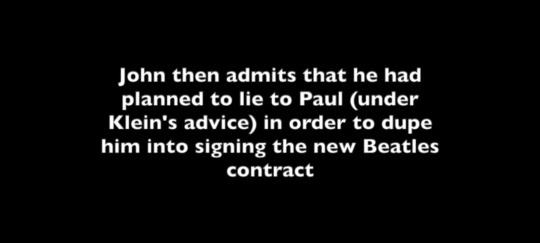
But also. Why are we trying to maneuver Paul at all if the end game is for John to leave? It just doesn't make sense to try to trick Paul into signing the contract unless John's divorce threat is at the very least not meant to be final.
I will never understand this picture. Even in the emotional state he's in, he's still hamming it up? There is something seriously wrong with this man.

I do find it interesting that the fact that Paul cried his eyes out after that meeting isn't even mentioned in the doc. I wonder why.
Let's put the bizarre, super-warped timeline in this quote aside for a minute. Apparently the depression started after Brian died and it lasted for about two years and John was still in it during Pepper. Okay. That aside . . .

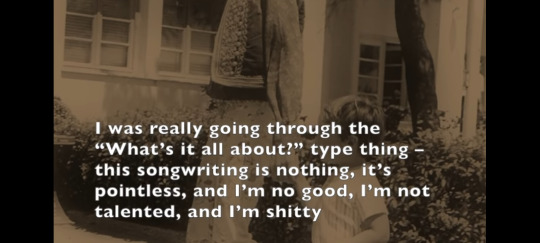
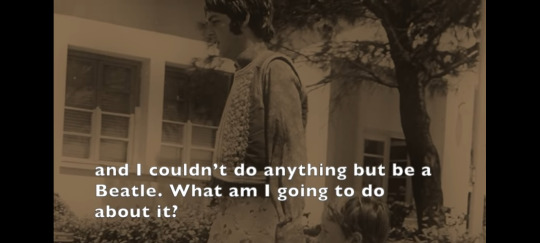
I have to assume this negative lense on what I can only assume means the period between 66 and 68 is highly influenced by hindsight bias. I agree that John was depressed at the time, in an unhappy marriage, doing too much LSD, etc and that looking at Paul's prolific talent and expansive , fast-paced life would have been maddening. But everyone go back to the end of part one really quick. He looks extremely happy. He sounds extremely happy. Everyone who knows him says he's never been happier. I think he just can't accept right now that there was so much good and he's lost it.
“I look from the wings at the play you are staging . . . I don't know why nobody told you how to unfold your love.”
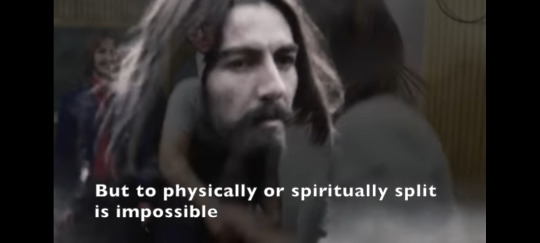
Insanity quote Hall of Fame. Paul explaining why the Beatles just had to break up, obviously, because he and John "didn't marry the same girl." Someone write the fic where John and Paul both marry the same girl. Could be Yoko or Linda. Sister trad wives au.
Okay, cool, so this means I have full permission to interpret and tin hat about any lyrics I want then, right?
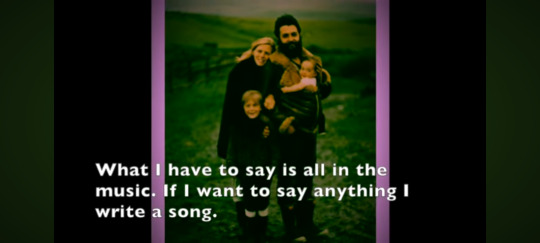
But also. Are we just not going to talk about the fact that Paul dumped a bucket of garbage water and punched this person? And are we not mentioning the depression and alcoholism and heroin abuse during this time?
It's so embarrassing how he looks to her for confirmation here. John, they asked you what you think. Just you. Not some complicated definition. Not Yoko's definition. Just your own thoughts.
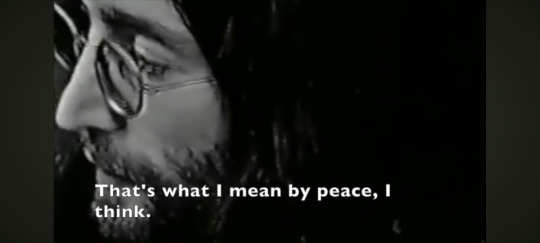
“I couldn't wait for them to make up their mind about peace or whatever. About committing themselves.” Yeah, John. You sound real committed to peace. Or whatever. Here's a theory that anyone can shoot down if they want: John asked Paul for some kind of commitment (a friendship wedding, a partnership contract, a mutual wanking pledge) in India and Paul was a chicken about it.
What was that day like, I wonder? I imagine extremely stiff and professional and horrid. But who knows. Maybe it was nice, and maybe that made everything worse.
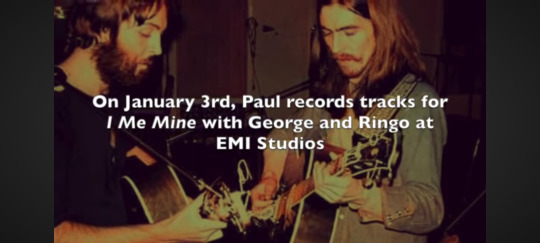
I will go to my death believing that instant karma was for Paul.
Do we think John actually did send Paul “about twenty postcards from Denmark” all covered in hearts none of which Paul responded to? Paul could be just as cruel in his lack of reaction as John was in his over reaction.
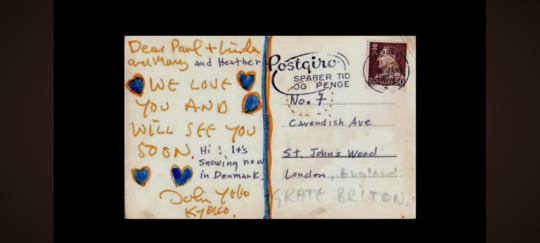
I'm sorry but that is not what a man says when he's just lying to the press to buy time for business. That's what a man says to the press when he's trying desperately to communicate with someone who he can't get through to any other way.
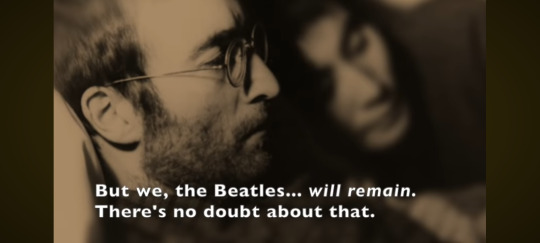
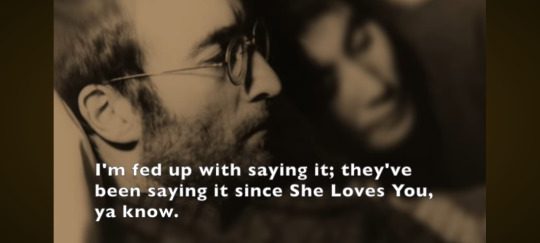
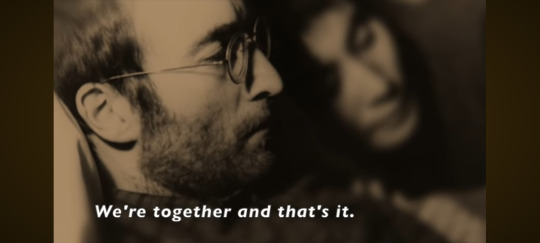
But really, I just don't understand why the creator chose to minimize Paul's emotional response to John's divorce statement. If we don't see him bawling his eyes out and losing the will to live, he comes off like a self-assured, uncaring, jerk. Which. To be fair. John didn't see those things, and that is exactly what John thought of Paul during this time. But still. The audience now comes away from this doc with a skewed view.
All we get is Paul being pissed off about Phil Spector butchering Let it Be without his consent and John and George trying to change McCartney's release date without his consent. Which are both a) understandable and b) strong, male, angry reactions. Making this section portray Paul in the same one-dimensional hyper-masculine way that John so often is. Which isn't my favorite. But hey, it's my only complaint about this doc so far.

Anyway, update: I won't be able to do part three until it gets reuploaded, so we're on hiatus for this project for the time being.
#paul mccartney#the beatles#john lennon#mclennon#ringo starr#george harrison#understanding lennon mccartney#ulm
138 notes
·
View notes
Text
Top 4 Music Influencers Shopping 2024
Music, the universal language of emotions, holds the power to heal and inspire. In today’s digital age, music influencers are at the forefront, showcasing their unique styles and connecting with audiences worldwide. From singers to composers, these influencers navigate diverse genres, captivating listeners and setting trends in the ever-evolving music scene. Here’s a handpicked selection of the top 4 music influencers who are making waves and setting the stage for 2024.

Starting his musical training in Hindustani Classical music during his early childhood, Sumonto has crafted his musical journey from being selected for Saregamapa Lil Champs to becoming a music influencer with his viral music covers. He has become a household name in the music industry, boasting more than 450k followers on Instagram and over 270k views on ‘Khair Mangda’, showcasing his ability to captivate audiences and make them groove to his beat.

Sourav Ray is popularly known for creating mashups, and one of his recent trending mashups is ‘Husn X Let her go’ with millions of views. He is known for producing Lofi mashups to originals. His deep understanding of music and passion to create it in such a way that it touches every soul and resonates with every listener. His talent, hard work, and dedication have paved the way for him to achieve his dreams and goals in life.

Mihika Sansare is popularly known for creating music covers in her unique style and posting them across social media platforms to entertain and engage with her audience. She is a guitarist and a singer with 250k+ followers on Instagram and 600k+ subscribers on YouTube. One of her covers — ‘Tumhe jo maine dekha’ has garnered more than one million views.
Vasu Kainth
Vasu Kainth is a singer, composer, and a songwriter. He has a huge fanbase with 90k+ followers on Instagram and 200k+ subscribers on YouTube. From original songs to mashup videos, he is creating music in a unique way to connect with his audience. He even got the opportunity to collaborate with other renowned musicians from the industry, that feels like a dream come true. From classical roots to innovative mashups and soulful covers, every artist has carved their unique style, resonating with audiences globally. Music influencers have turned social media platforms into their new stage, where they can entertain and connect with their audience.
#Influencer Marketing Agency#Influencer Marketing Agency in India#Music Influencer#Music Influencer in India
0 notes
Text
Monkey Man and why I loved the heck out of it

At it's core, it's a Bollywood flick presented to the West with familiar nods to previous action films - I definitely picked up hints of Tony Jaa's influence on Asian action flicks throughout.
It's heavily focused on police corruption, something commented a lot about in India, and here, more importantly, Indian films. Just like America has its love affair with mobster flicks, Bollywood has a long history featuring films that showcase police corruption, sometimes tied into political extremism, fanatical or greedy religious leaders, and Monkey Man comments on all this as well and pays nods to that commonality. We've got televangelists and religious leaders in the states funnelling money, preaching prosperity gospel, and using it to influence politics and fund lavish lifestyles here.
Monkey Man shows this happening in India, and is filled with Indian culture and symbolism through out. The focus on Hanuman, the god and one worshiped by the strong, chaste, wrestlers, champions, and fighters. It's a common thing to have a household deity if you will. Some families might choose to focus worship on Ganesh, others Hanuman, some might do Mata Rani or Lakshmi. Here, it's the divine Vanara (monkey people race) - one of the Chiranjivi - immortals/forever-lived.
Hanuman. Themes of rebirth, common in South Asian history and mythology are present from Kid being a ringer, beat up fighter getting whooped for money to being reborn and facing his trauma through a ritual/meditate process that I don't want to get too much into to not spoil the movie. Post that, he begins his own self alchemy to really become the true Monkey Man. Nods to Ramayama, and an unapologetically Indian story featuring dialogues throughout in Hindi - don't worry, there are subtitles.
And of course a love for action flicks before it, all the way back to Bruce Lee. A beautiful use tbh of an autorickshaw (and you might know them as tuk-tuks in Thailand) which are popular in India with an added kick...I swear, that thing had to be modified with a hayabusa motor. Which is an actual thing people do - modding those dinky rickshaws with motorcycle engines, and considering they weigh nothing at all, they can REALLY FLY once you do that.
Monkey Man brings to the big screen other elements of India people might not know about, such as the gender non conforming and trans community that has a long history in India, presenting them as action stars as they go up against a system of corrupt elites oppressing part of the city, marginalized communities, and minority voices as depicted in the film. I'm not sure if people are going to get all of that without having the context, but I love that it does it without holding anyone's hands.
It's a fun action flick to see in the age of superhero films, and I say that as an obvious superhero/sff nerd. Also loved that Dev included a little bit about Hanuman's own story in the film, and the loss of his powers - almost mirrored by Kid's own loss of self/skills, strength until he confronts his trauma and is reborn, and in fact, remade (not necessarily the same). Also, the use of music was brilliant, including one scene with a tabla (the paired hand drums of south asia) - and Indian music is central to Indian stories.
This is a culture with evidence going back to the Paleolithic with cave murals showing art of Indian dance nearly 30,000 years ago. Yeah, that far back. As well as Mesolithic period art depicting musical instruments such as gongs, lyres, and more.
Indian music is some of the earliest we can find that has high developed beat and rhythm structures such as 5, 7, 9 and now the extremely common and known 4/4 and 3/4 - which so much of Western music is built upon. The foundations and experimentation of/in Jazz. John Coltrane and John Cage were heavily inspired by Indian music and incorporated a lot from it into their works. And Monkey Man blends Eastern and Western music through the narrative as comfortably as it does an Indian story in a very familiar Western accessible structure.
Dev did a wonderful job. And thanks to Jordan Peele for bringing it to screens.
#monkey man#jordan peele#dev patel#Bollywood#bollywood movies#Indian films#indian culture#India#hanuman#ganesh#south asian#Ramayama#superhero#superhero films#Indian music#bollywood songs#loved this film#great film#love this movie#john coltrane#John Cage#Jazz#music soundtrack#films#movies#movie review
67 notes
·
View notes
Text
i was just about to watch this video by Cheyenne Lin
youtube
Avatar and the Wh*te Imagination (or lack thereof)
about the limits of white imagination and how evident it is in the Avatar movies, and it just reminded me that james cameron worked with an ethnomusicologist, Dr Wanda Bryant, to make music for the na'vi because he wanted something that "would sound like nothing we’ve ever heard on earth" then he decided what was made was too otherworldly and decided that their music should just be what white people would call "alien" and ethnic, aka, whatever music exists in African, Asian and Native American cultures (and that was the final result).
Originally there were many influences coming from all over the globe, but when Cameron listened to the demos, he claimed it was too recognisable as well as too 'weird', albeit for white people and just pushed for a more 'down to earth' version. Avatar is evidence of the continuation of generalized exoticism and stereotyping still being a driving force in Hollywood

[IMAGE ID: A screenshot of a segment from the journal entry written by ethnomusicologist, Dr Bryant discussing the process of creating the music for the avatar films that reads:
"In our initial phone conversation, Horner asked me to find unusual musical sounds that “no one has heard before,” by which he really meant sounds not readily recognizable by the average American movie-goer as belonging to a specific culture, time period, or geographical location"
/END ID]
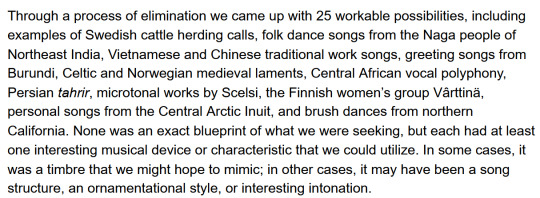
[IMAGE ID: A screenshot of a paragraph from the journal entry written by ethnomusicologist, Dr Bryant discussing the process of creating the music for the avatar films that reads:
"Through a process of elimination we came up with 25 workable possibilities, including examples of Swedish cattle herding calls, folk dance songs from the Naga people of Northeast India, Vietnamese and Chinese traditional work songs, greeting songs from Burundi, Celtic and Norwegian medieval laments, Central African vocal polyphony, Persian tahrir, microtonal works by Scelsi, the Finnish women’s group Vârttinä, personal songs from the Central Arctic Inuit, and brush dances from northern California. None was an exact blueprint of what we were seeking, but each had at least one interesting musical device or characteristic that we could utilize. In some cases, it was a timbre that we might hope to mimic; in other cases, it may have been a song structure, an ornamentational style, or interesting intonation."
/END ID]

[IMAGE ID: A screenshot of a paragraph from the journal entry written by ethnomusicologist, Dr Bryant discussing the process of creating the music for the avatar films that reads:
"Horner then met with Jim Cameron for his input on our musical ideas. Cameron is a very hands-on director and wants to be kept in the loop about all major decisions. Most of the ideas we presented were dismissed by Cameron out of hand, rejected with appropriately blue language as either too recognizable (“Oh, that’s Bulgarian”) or just “too fucking weird!” Half a dozen examples were approved as possibilities."
/END ID]
You can read the full article here:
There is also a video by sideways that discusses this (if you don't want to read):
youtube
#avatar#avatar 2#sorry for the long post i just.... its the avatar hater in me#i hate this racist alien franchise so much#ref#text#film#i wasnt sure whether to put any of this under a cut#but i dont think this is too long ill have to see when it posts#Youtube#music
473 notes
·
View notes
Note
Being proud of the country you are born in, is a privileged stance isn't it? I love India. I don't know if I cannot not love India but this comes from a privileged place isn't it? Because what has India ever done for every other citizen that doesn't fit into the hindu savarna demographic? What has India done to Kashmir? It's strange we have an independence day while occupying another land. It's so ugly.
sorry for letting this marinate in my inbox. i think nationalism is a dangerous and awful drug and that a nation state should not ever deserve your loyalty or any kind of deference. especially not love of the kind that demands submitting your personal moral precepts to its purposes. nation building is a material and ideological process – it streamlines and punishes and constructs fabrications from whole cloth. i recognise the usefulness of indian nation building in anti colonial organising ofc. it makes romanticism about india very easy. but i think you have to think more about what it is you "love" and you'll find its often something more than that abstracted nation state. in my experience its been a lot like losing faith in religion which makes sense given how institutions seek to exert influence thru human desire for community.
its kind of impossible to not have affection for culture and language and music and food and all that good stuff, especially if you grow up in one and especially if it has such a breadth of diversity in it. but you have to recognise that people create these things regardless of whether a nation state recognises their contributions or not. the vast wide swathe of humanity awaits your love. do not wait for the nation to tell you its worth.
76 notes
·
View notes
Note
Im gonna need your like, whole musical rec list, bc literally every song you have posted has not flopped once, give me your faves i need to eat them
OUGHHH YOUVE UNLOCKED THE BEAST ARGSHHFHJDF....
in the interest of making this both easily accessible but not stretching the dashboard, im embedding bandcamp links when i can, otherwise linking to youtube when unavailable
in no particular order, inclusion based mostly on what im still actively into LMAO but also just things you should give a go at least once:
list of artist recommendations
zeal and ardor: described as a mix of african-american spirituals and black metal. try devil is fine, you aint coming back, wake of a nation or church burns
bloodywood: indian folk metal, literally nobody is doing it like them. recently featured in monkey man (2024), try chakh le, yaad or dana dan
stromae: if youve never heard any of his songs WHAT ARE YOU DOING..... incredible lyricist, described as a blend of hip hop/electronic. papaoutai made the rounds on tumblr a while back, but you should also try santé and l'enfer
alamat: pinoy pop. a youtube commenter described them as sounding like 2nd gen kpop which probably also explains why i took a shine to them LMAO, notable for the amount of filipino culture on display and the diversity thereof (singing in different languages, themes). first heard them thru kasmala either here or on twitter lmao, try aswang or maharani
andy bull: alt-pop. a lot of poppy and upbeat songs with a melancholic undertone imo. an australian artist, try it's all connected or keep on running
cosmo sheldrake: electronic, wikipedia also lists him as folktronica and baroque pop. you may have heard the song come along on an apple ad - hes known for sampling sounds from nature. pliocene for example features sounds from endangered ecosystems.
if you like cosmo sheldrake, you might like hidden orchestra (electronica, ambient). also making use of field recordings, i really love the archipelago mixtape but its a hard sell at about an hour lmao. if you like the following song then i implore you to give it a go
son lux: experimental, you may have heard from them in the entire soundtrack for everything everywhere all at once (!!!!!). try dangerous, dream state (brighter night) or live another life.
ammar 808: electronic/world fusion, also behind bargou 08 (folk rock you should also listen to). i just cant get ain essouda out of my head, but i also love geeta duniki
miyavi: j-rock, used to be a visual kei artist. these days he might be known more for anime openings like flashback (kokkoku) or other side (id:invaded), or for work like snakes in arcane (or actually inspiring and voicing a character in it), but ive always been partial to his early work like sukkyanen myv or ashita, genki ni naare
songs/albums
'threads' album by now, now (indie rock).
'dream to make believe' or 'what to do when you are dead' by armor for sleep (rock, emo). here's the truth about heaven from the latter album
i already posted about it but denzel curry's 13lood 1n + 13lood out mixx (rap, trap) is extremely good
the guilty gear soundtracks and im so serious im not fucking joking. different kinds of rock and metal and all sorts of influences put in, a genuine labor of love. xrd and earlier games are mainly instrumental with some vocal tracks (try give me a break or big blast sonic), while strive pretty much always includes vocals (of course i need to rec rock parade, but also try requiem. its genuinely hard for me to pick and choose lmao)
not an album and not an artist
coke studio pakistan and coke studio bangla knocking it out of the fucking park, im particularly a fan of harkalay and kotha koiyo na. you could try the other coke studios too (tamil, india, etc)
triple j like a version is when the radio station triple j brings in artists and has them do a cover of a song (artists choice). i liked denzel curry's cover of bulls on parade and flume's shooting stars (video for this one is incredible, man had a vision you just have to stick it out), but you get a lot of interesting interpretations like the wombats' running up that hill, gordi's in the end or, infamously. the wiggles' elephant
ive DEFINITELY missed out some, but thats what my music tag is for LMAO i hope someone discovers something they like here!!!!
#ive tried to include a mix of songs that covers their range..#includes the ones i like but ALSO is easiest on newcomers#particularly with the metal bands LMAO#eg church burns isnt really my favorite on the album but i remember it being the song i started with#specifically because someone in the reviews said it would be the easiest to start with. and they were right#also miyavi HAD to be here ive been a fan since GRADE SCHOOL#if ive recommended an album and not the artist its probably because im not a huge fan of their other stuff LMAO either cos#theyve moved away from what ive recommended stylistically (armor for sleep or now now)#or i havent gotten to a lot of the other stuff/its not my thing (denzel curry. sorry)#i liked the song ricky but a lot of the discography just isnt what i listen to rip#honestly it was so hard to choose AHSDUSDF i tried to choose artists that i really think others should listen to#but yeah obviously some are just there because. /i/ like them lol#wait not me reading the ask properly again and seeing that the focus was MY faves ASHDSDFSDHFBSDf#i got too excited at the prospect of recommending music#sonochinosodomy#ask#Bandcamp#music#obviously this couldnt be Everything... but ive done my best#to pare it down.............#long post
36 notes
·
View notes